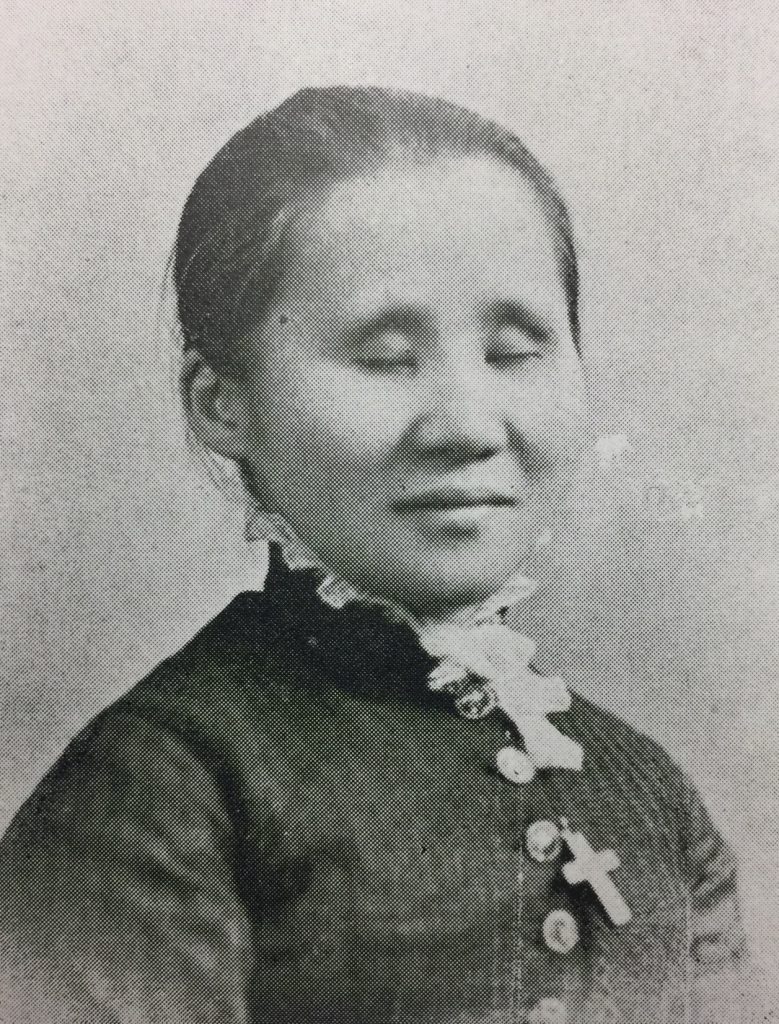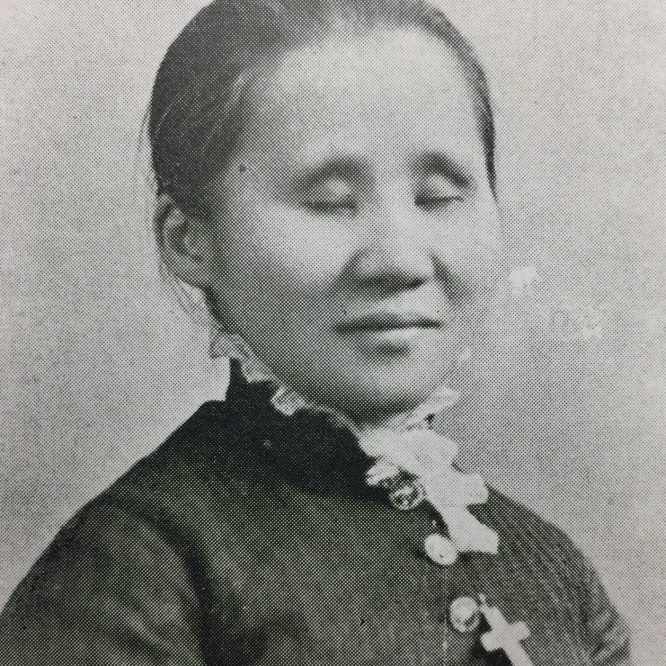Vol. 4, No. 12
While cataloging the Department of History’s collection of rare books, I came across a small booklet entitled From Serfdom to Culture written by “a white-haired Rochester confectioner” named Alfred F. Little in 1939. Interestingly enough, my discovery of this item happened in the same way in which C. W. Lattin encountered this story back in 1996.
Presented with two volumes from a blind Chinese woman named Jessie Gutzlaff, Little felt encouraged to record a few brief memories regarding the life of a remarkable woman. As he wrote nearly 80 years ago, “few persons, if any, now living in Albion, ever heard of Miss Gutzlaff, or knew of her connection with the village…” Those two volumes, authored by Samuel Smiles, were donated to the Swan Library in 1910.
The story of Jessie Gutzlaff dates back to 1842 when, as a young girl, she arrived in New York City with two other Chinese girls named Fanny and Eliza, all three accompanied by Mary Gutzlaff. Mrs. Gutzlaff was the wife of Karl Gutzlaff, a famed missionary of the Netherlands Missionary Society. Upon their arrival to the U.S., the girls were sent to various institutions under the sponsorship of philanthropic individuals; Jessie was sent to the Institution for the Blind at Columbus, Ohio under the support of George Douglas of Long Island. On July 22, 1843, Jessie arrived at the Ohio Institute in good spirits, as the organization’s annual report notes that “these little girls…are intelligent, healthy, and very cheerful.”
After relocating to New York, the story becomes mired in confusion and uncertainty as on January 1, 1852, Jessie appears in the records of the Christ Episcopal Church in Albion as a member of the Middleton family. It is presumed that Jessie became acquainted with Jane Middleton while Middleton was working as a matron at the Institute for the Blind in Columbus. It is known that Ann and Jane Middleton operated an institution of learning at Albion where homeless or orphaned young girls were taken in and used as teachers.
Although much of Jessie’s time with the Middletons is shrouded in mystery, Miss Elizabeth Thompson of Philadelphia wrote in a short letter to William Chapin that “…it is known that Miss Middleton took the child in her home for remunerative object. She would have gathering for the benefit of Jessie, to buy a piano.” Thompson continued to write that although Middleton was “not an easy taskmaster,” no one lodged any complaint of ill-treatment. Mr. Chapin, familiar with Gutzlaff during her time in Ohio, became aware of her situation thanks to an unnamed clergyman from her neighborhood.
In 1861, Jessie was “rescued” by Mr. Chapin and enrolled at the Pennsylvania Institution for the Instruction of the Blind before she was admitted to the “Home” in 1869. Sarah Sterling, a librarian at the institution, wrote, “Miss Jessie began to read proof about January, 1893, soon after American Braille was introduced into this school. She read all proof except mathematics and the foreign languages. According to records she has read in American Braille (machine work) 52,679 pages, covering 426 titles…she was always a conscientious worker, and whether it was machine or handwork, she was distressed if anyone found a mistake she had overlooked.”
Fifty years after her enrollment in the Pennsylvania institution, Jessie was in Albion visiting Mary Middleton Smith, an orphan also taken in by Jane Middleton in the 1850s. The two decided to attend the Pan-American Exposition in Buffalo and it was during this stay in Orleans County that Gutzlaff became acquainted with Alfred Little. He later recalled that he and Jessie regularly corresponded by letter, Miss Jennie writing longhand and only occasionally repeating a word when interrupted.
After her sudden death on October 2, 1920 due to heart failure, Jessie Gutzlaff was buried in the Mt. Moriah Cemetery in the lot reserved for the Chapin Home for the Aged Blind. Her will left $5,000 in Pennsylvania Railroad stock, the majority of which was purchased with the modest wages she earned as a proof-reader. The total amount of her estate was bequeathed to the Episcopal Board of Missions for the purpose of supporting education in China. Of the annual interest, $100 was set aside to support the instruction of a Chinese boy at St. John’s College in Shanghai and the remaining balance was put towards the maintenance of scholarships for educating Chinese women at St. Mary’s Hall in Shanghai.


